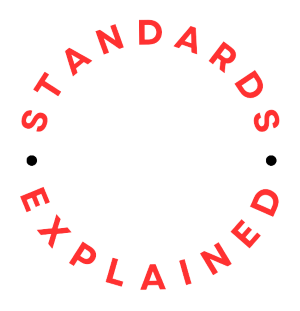ISO 37000:2021 Governance of organizations — Guidance offers guidance on the governance of organizations. It provides principles and key aspects of practices to guide governing bodies and governing groups on how to meet their responsibilities so that the organizations they govern can fulfil their purpose.
Who should use the standard?
The standard is applicable to all organizations regardless of type, size, location, structure or purpose. It is also intended for stakeholders involved in, or impacted by, the organization and its governance.
What does it cover?
| Introduction |
| 1 Scope |
| 2 Normative references |
| 3 Terms and definitions |
| 3.1 Governance and organization |
| 3.2 Principles and outcomes |
| 3.3 Roles |
| 4 The governance of organizations |
| 4.1 General |
| 4.2 Integrated governance |
| 4.3 The governing body |
| 5 Overview |
| 6 Principles of governance |
| 6.1 Purpose |
| 6.2 Value generation |
| 6.3 Strategy |
| 6.4 Oversight |
| 6.5 Accountability |
| 6.6 Stakeholder engagement |
| 6.7 Leadership |
| 6.8 Data and decisions |
| 6.9 Risk governance |
| 6.10 Social responsibility |
| 6.11 Viability and performance over time |
Applying ISO 37000
Applying governance in an organization in conformity with ISO 37000 involves several key steps.
1. Leadership and Commitment
- Obtain leadership commitment and support for the implementation of governance practices in the organization.
- Establish a governance framework that aligns with the organization’s values, mission, and objectives.
2. Define Governance Objectives
- Define clear governance objectives that support the organization’s strategic goals and stakeholder interests.
- Ensure that governance objectives are measurable and achievable.
3. Establish Governance Structures and Processes
- Define governance structures, roles, and responsibilities within the organization.
- Establish governance processes and decision-making mechanisms to ensure accountability and transparency.
4. Risk Management and Compliance
- Implement risk management processes to identify, assess, and mitigate risks related to governance.
- Ensure compliance with relevant laws, regulations, and standards.
5. Ethical Standards and Integrity
- Establish ethical standards and codes of conduct for all members of the organization, including leaders, employees, and stakeholders.
- Promote integrity and ethical behavior in all governance activities.
6. Stakeholder Engagement
- Identify and engage with key stakeholders, including shareholders, customers, employees, suppliers, and the community.
- Consider stakeholder interests and feedback in governance decision-making processes.
7. Transparency and Accountability
- Foster a culture of transparency by providing stakeholders with access to relevant information about governance practices and decisions.
- Hold individuals and entities accountable for their governance responsibilities and actions.
8. Performance Monitoring and Evaluation
- Establish key performance indicators (KPIs) to measure the effectiveness of governance practices.
- Regularly monitor and evaluate governance performance against established KPIs.
9. Continual Improvement
- Implement processes for continual improvement of governance practices.
- Review and update governance structures, processes, and policies regularly to adapt to changing circumstances and requirements.
10. Training and Development
- Provide training and development opportunities to enhance the governance knowledge and skills of leaders, employees, and stakeholders.
- Ensure that individuals involved in governance activities have the necessary competencies to fulfill their roles effectively.
11. Communication and Reporting
- Establish effective communication channels for disseminating governance-related information to stakeholders.
- Prepare regular reports on governance performance and activities for stakeholders’ review and feedback.
12. Legal and Regulatory Compliance
- Ensure compliance with applicable laws, regulations, and standards related to governance.
- Stay informed about changes in governance requirements and adapt organizational practices accordingly.
13. Culture and Values
- Promote a culture of integrity, trust, and accountability throughout the organization.
- Ensure that governance practices reflect the organization’s values and principles.
14. Risk Culture and Resilience
- Foster a risk-aware culture within the organization that encourages proactive risk management and resilience-building.
- Promote a mindset of learning from failures and using them as opportunities for improvement.
15. External Collaboration and Partnerships
- Collaborate with external stakeholders, including regulators, industry associations, and peer organizations, to share best practices and promote good governance standards.
- Build strategic partnerships that support the organization’s governance objectives and enhance its reputation.
16. Conflict Resolution and Dispute Management
- Establish processes for resolving conflicts and managing disputes related to governance issues.
- Ensure fair and impartial resolution mechanisms that uphold the organization’s values and principles.
17. Board Effectiveness
- Ensure that the organization’s governing body (e.g., board of directors) operates effectively and fulfills its governance responsibilities.
- Provide board members with the necessary resources, information, and support to carry out their duties effectively.
18. Compliance Monitoring and Enforcement
- Implement processes for monitoring compliance with governance policies and procedures.
- Take appropriate enforcement actions in cases of non-compliance or misconduct.
19. Data Protection and Privacy
- Establish data protection and privacy measures to safeguard sensitive information related to governance activities.
- Ensure compliance with data protection laws and regulations.
20. External Assurance
- Consider seeking external assurance of governance practices from recognized bodies or auditors.
- Use external validation to demonstrate adherence to ISO 37000 principles and enhance stakeholder trust.
Some further words of advice…
Remember that governance is an ongoing process that requires continuous attention, monitoring, and improvement. By following these steps and adhering to ISO 37000 principles, organizations can strengthen their governance practices and contribute to their long-term success and sustainability.
ISO 37000 can be purchased from the ISO.org website.














Comments (0)